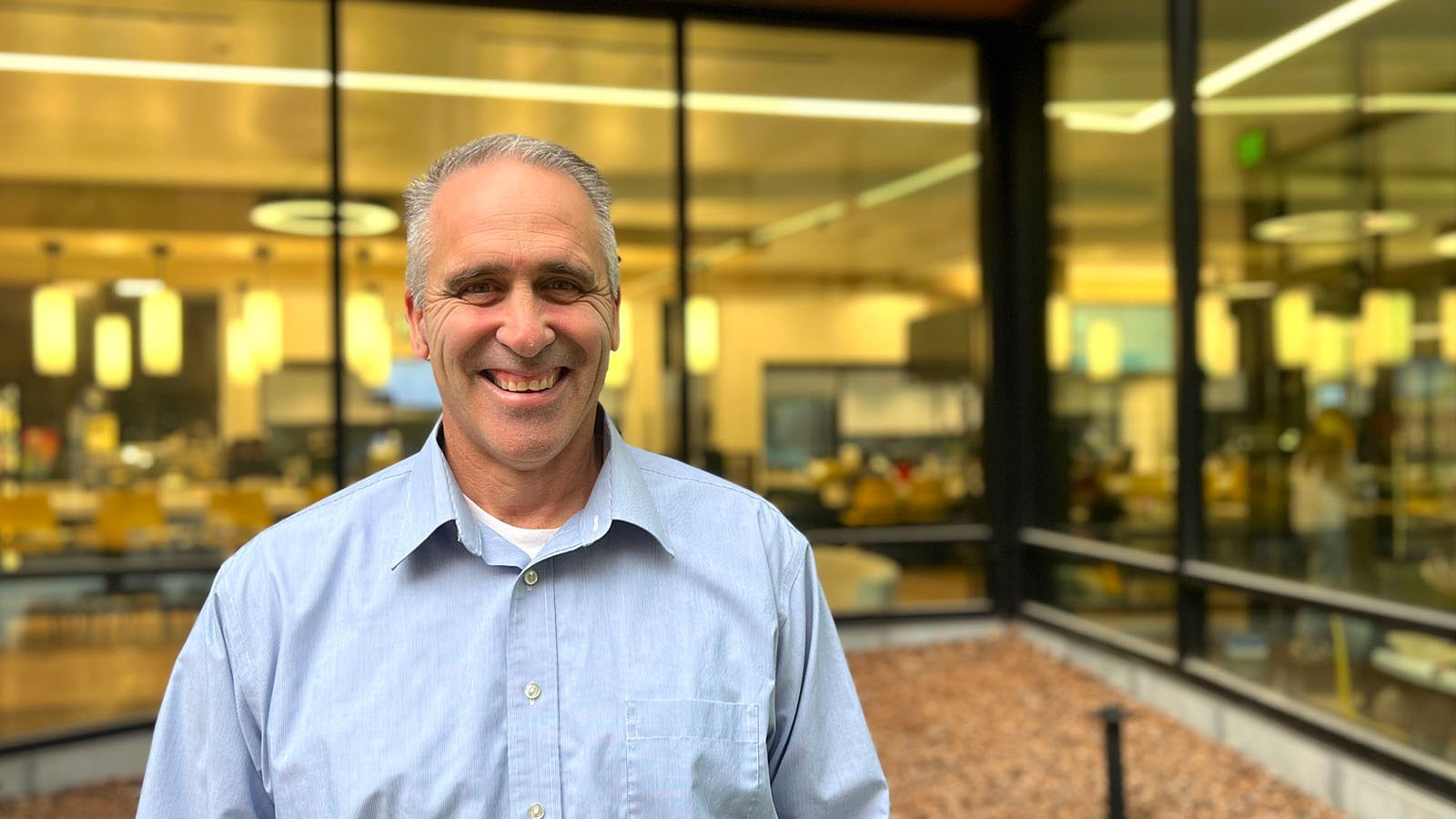USU's Institute for Disability Gains New Service Division Director
By JoLynne Lyon |
Curt Phillips is the new service division director of the Institute for Disability Research, Policy & Practice at USU.
Curtis Phillips is the new service division director at the Institute for Disability Research, Policy & Practice at Utah State University. He comes to the job at a busy time.
The division, which includes Up to 3, South East Early Intervention, the Employability Clinic and Stride Services, has programs operating in several Utah regions. Plans are in place to grow even more.
“We’re expanding throughout the state to more rural areas,” Phillips said.
Phillips follows in the footsteps of Sue Olsen, who began a phased retirement earlier this year. He is a physical therapist who has worked with the Institute for 22 years. He earned his Ph.D in Disability Disciplines from USU.
The expansion of the division is taking place both online and in-person. Free training and professional development are offered online through Project Early Echo (for early intervention practitioners), Project SCOPE (for practitioners dealing specifically with the families of babies impacted by opioid use), and Project Pyramid (for early educators, interventionists and families seeking to promote healthy social and emotional development).
In addition, services are offered in-person through the Employability Clinic (Logan), Up to 3 (Cache, Rich and Box Elder counties), South East Early Intervention and the Utah Assistive Technology Program in communities outside of Logan. Plans are in place to extend services to even more rural Utahns. These services are especially helpful to people who are far from population centers. Some in the Uintah Basin may wait for months to receive a wheelchair if not for the Utah Assistive Technology Program. People in Helper, Utah, are still able to receive early intervention for their infants and toddlers in their homes, even though they are far from a metro area.
The biggest challenge to providing services is staffing. The post-COVID employee crunch is still very much at play in the disability services field.
“Up to 3 has had almost a two-thirds turnover in the last year,” Phillips said. “You just can’t find people.”
In the private sector, the job market is dynamic, with frequent pay raises (and higher product and service prices) to keep up with staffing demands. But IDRPP’s Service Division must stick to fixed contracts, with limits on the rates it can set for practitioners. It’s a problem all disability service providers are facing: Workers can find better pay as a barista than as a person providing much-needed, direct services to people with disabilities.
Those staffing concerns made 2021-22 a challenging year. But through it all, the division still managed to offer services to 2,012 Utahns needing early intervention, assistive technology, or employment skills.
“We know that one in five people in Utah are affected by a disability,” Phillips said. “In the Division of Services, we recognize that the individuals we serve are some of the most marginalized people in Utah, and are proud to be a part of the solution in helping them live a full and enjoyable life. I’m personally grateful to those who work in the Division to provide these services, and marvel at their dedication. Everyone deserves a happy and fulfilling life and I am proud to be a part of fulfilling that need.”
WRITER
JoLynne Lyon
Public Relations Specialist
Institute for Disability Research, Policy & Practice
435-797-7412
jolynne.lyon@usu.edu
CONTACT
Curtis Phillips
Service Division Director
Institute for Disability Research, Policy & Practice
435-797-0673
curt.phillips@usu.edu
TOPICS
Disabilities 75storiesComments and questions regarding this article may be directed to the contact person listed on this page.







